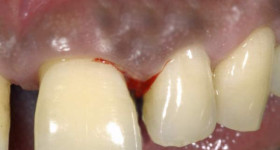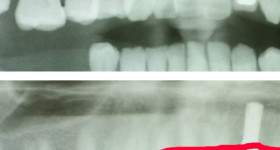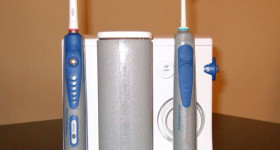Composite (Plastic) fillings – are they worth the cost?
White fillings are in ever greater demand – but they are not always a good idea!
 People are sick of silvery amalgamate, people want to look good, and this includes having a perfect set of teeth. Many people are now getting their amalgamate fillings replaced by white fillings. In the picture you see diffrent white Fillings: Composite (1); Glasionomercement = GIZ (2); Ceramicinlays (3); Goldceramicinlays (4).
People are sick of silvery amalgamate, people want to look good, and this includes having a perfect set of teeth. Many people are now getting their amalgamate fillings replaced by white fillings. In the picture you see diffrent white Fillings: Composite (1); Glasionomercement = GIZ (2); Ceramicinlays (3); Goldceramicinlays (4).
–
Be aware: Composite fillings do not work that well in side teeth, a fact which many people do not know!
–Even manufacturers warn that these fillings should only be used to correct surface defects, since teeth do not react well to them. The tooth nerve often dies when this type of filling is used, leading to a root canal.
–
Patients who get their amalgamate fillings replaced by plastic are in for a bumpy ride. The fillings consist of tiny building blocks called monomers. As soon as a dentist shines a lamp on the filling, these little monomers start to connect – like Lego blocks, a process called polymerisation, which results in polymers – larger building blocks.
–
 But these plastic structures are not stable enough to hold up under chewing, so little „Lego blocks“ – monomers – start to separate (green area means Composite Fillings are ok, red area means Composite Fillings are not ok). These free-floating monomers are very toxic, they invade the tooth nerve, and the nerve dies.You do not feel the pain right away, it may take years for the „dead“ tooth to start making trouble, so patients do not always attribute this problem to the plastic filling. Some patients experience problems immediately after the plastic is inserted, such as problems when chewing, pressure, excessive sensitivity to heat or cold.
But these plastic structures are not stable enough to hold up under chewing, so little „Lego blocks“ – monomers – start to separate (green area means Composite Fillings are ok, red area means Composite Fillings are not ok). These free-floating monomers are very toxic, they invade the tooth nerve, and the nerve dies.You do not feel the pain right away, it may take years for the „dead“ tooth to start making trouble, so patients do not always attribute this problem to the plastic filling. Some patients experience problems immediately after the plastic is inserted, such as problems when chewing, pressure, excessive sensitivity to heat or cold.
–
 While some dentists specialize in this type of filling and use a coffer dam, special covers and layering methods to prevent complications, but plastic fillings still end up costing about as much as a ceramic inlay. But ceramic inlays are much better for your teeth than composite fillings – assuming the inlay is inserted correctly.
While some dentists specialize in this type of filling and use a coffer dam, special covers and layering methods to prevent complications, but plastic fillings still end up costing about as much as a ceramic inlay. But ceramic inlays are much better for your teeth than composite fillings – assuming the inlay is inserted correctly.
–
White teeth may be more trouble than they are worth! Think about what you’re doing. If you invest in your teeth, then be sure to use goods materials – gold, titanium or ceramics!
And/or develop a better brushing technique, because if you have poor brushing habits then you will need fillings someday.









